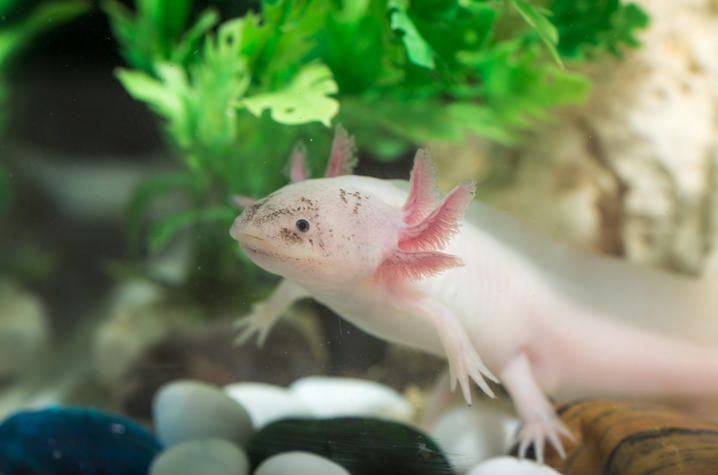UK Research Identifies Gene Linked to Evolution of Limb Development
LEXINGTON, Ky. (Oct. 5, 2021) — University of Kentucky College of Medicine researchers were part of a new study that gives insight into how limb development evolved in vertebrates.
The findings, published in Current Biology Oct. 4, identify a gene that plays a central role in the evolution of limb development in vertebrates. By manipulating this gene in mice, researchers were able to activate an ancestral form of limb development seen in early tetrapods (four-legged vertebrates).
In the limbs of all tetrapods, the bones on the hands and feet on the outside edge form first, known as postaxial development. The study focuses on salamanders, which are the only exception to this rule: their limb bones develop preaxially, or from the inside edge; the thumb before pinky.
“For more than 100 years, scientists have wondered if preaxial development evolved uniquely in salamanders,” said study co-author Randal Voss, Ph.D., University Research Professor in the Department of Neuroscience and Director of the Ambystoma Genetic Stock Center. “Now we understand that it’s ancestral to the postaxial mode seen in all other tetrapods. Salamanders are not unusual, they simply retained the ancestral mechanism of vertebrate limb development.”
Voss, who studies salamanders’ unique ability to regenerate body parts including limbs, teamed up with principal investigator Susan Mackem, M.D., Ph.D., with the National Cancer Institute’s Center for Cancer Research, whose research focuses on the signaling networks involved in limb development.
In both mice and axolotl salamanders, researchers manipulated the function of Gli3, a gene that is known to be important in regulating the pattern of limb development. Mice with excess GLi3 repressor activity reverted to preaxial limb development — just like salamanders. Conversely, when Gli3 was “knocked out” in salamanders, they developed limbs postaxially, like the mice and all other tetrapods.
“In evolutionary terms, what we’d basically done in mice is bring back the ancestral form of limb development by gene manipulation, proving that Gli3 was key for the shift from preaxial development seen in early tetrapods,” said Voss.
The results are significant to developmental and evolutionary biologists, including paleontologists that have recently identified fossils that support the idea that preaxial limb development is the ancestral mode of limb development in vertebrates. They also give insight on evolutionary questions about the transition from fins as vertebrates acquired limbs and moved onto land.
In the future, findings from this work will also help answer questions about limb regeneration, Voss says. Salamanders are one of the few four-legged animals that can fully regenerate a limb after losing it and scientists have proposed the capability is linked to their retained preaxial development.
Voss now plans to study limb regeneration in salamanders that his lab genetically manipulated for postaxial development.
Research reported in this publication was supported by the Center for Cancer Research and the Frederick National Laboratory of the National Cancer Institute of the National Institutes of Health, by the Office of Infrastructure Programs of the National Institutes of Health under Award Number P40OD019794, and by grants from OHSU Medical Q10 Research Foundation and Shriners Hospitals for Children. The content is solely the responsibility of the authors and does not necessarily represent the official views of the National Institutes of Health.

As the state’s flagship, land-grant institution, the University of Kentucky exists to advance the Commonwealth. We do that by preparing the next generation of leaders — placing students at the heart of everything we do — and transforming the lives of Kentuckians through education, research and creative work, service and health care. We pride ourselves on being a catalyst for breakthroughs and a force for healing, a place where ingenuity unfolds. It's all made possible by our people — visionaries, disruptors and pioneers — who make up 200 academic programs, a $476.5 million research and development enterprise and a world-class medical center, all on one campus.




